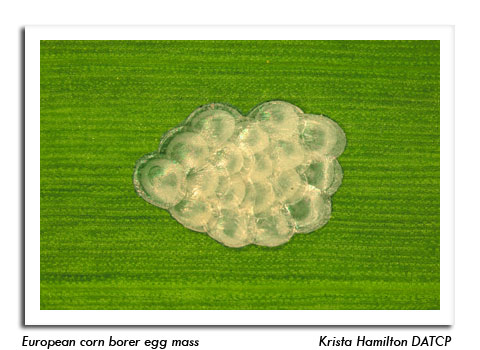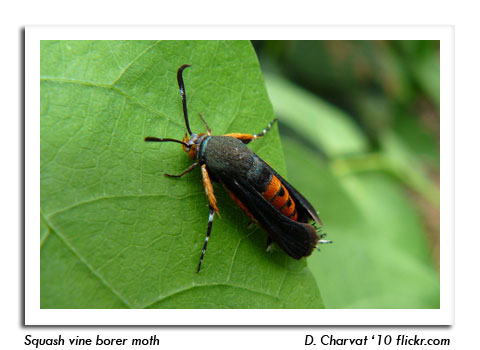
 |
|
|
Looking Ahead
Volume 57 Number 7 Date 05/24/2012 EUROPEAN CORN BORER - The peak in moth activity may have occurred in portions of the southwest, south-central and west-central areas. Based on the corn borer growing degree day model, the spring flight of moths is expected to peak at 631 degree days (base 50°F). Oviposition on vegetable and weed hosts has intensified and larval hatch is in progress in the south. Since development of this pest is not well synchronized with corn growth this spring, most first generation larvae are likely to develop on hosts other than corn. APPLE MAGGOT - Adult emergence from the soil could begin as early as June 1 near Beloit, June 4 near Madison, June 12 near Racine and June 15 near Eau Claire, which would be 4-5 weeks ahead of last season and unusually early. This annual event occurs around 900 degree days (base 50°F) when soil moisture levels are adequate. Apple growers are advised to set yellow sticky board traps next week in perimeter trees adjacent to wild hosts or abandoned orchards to detect the first male flies. VARIEGATED CUTWORM - Additional reports have been received by the UW Insect Diagnostic Lab concerning eggs of this species on the windows, eaves and siding of homes in Ashland, Barron, Door, Douglas, Iron, Marathon, Oneida, Portage and Washburn counties. Much of the population at this time consists of small larvae and eggs, which will inevitably hatch in a matter of days. Alfalfa, vegetable crops and home gardens in northern Wisconsin may begin to show evidence of infestation in the next 1-2 weeks. Favored plants include tomatoes, potatoes and hostas. BLACK CUTWORM - Larvae from earlier flights of moths that oviposited in fields last month are now in the late-instar cutting stages. Damage has been observed Dane, Rock, Sauk and Walworth counties in the past two weeks, suggesting that corn growers should remain watchful for signs of feeding injury. Scouting may be discontinued at the V5 stage. SQUASH VINE BORER - Moth emergence and egg laying are anticipated during the first week of June in the southern areas, about the time chicory blooms. Pumpkins, squash, gourds and other vine crops should be examined daily for eggs and evidence of larval boring from 900-1,000 degree days (base 50°F). Insecticidal controls must be applied to the stems of plants when the adults are first noticed, while the runners are less than two feet long. Repeated applications may be required throughout the three-week oviposition period -- Krista Hamilton, DATCP Entomologist 





|
|
|